A best article on Western Gloves
There is a widely circulated romantic saying that giving gloves means giving love, because the word “Glove” can be broken down into “Give Love”.
Students who are preparing Valentine’s Day gifts, can you consider choosing a pair of beautiful and practical gloves to give to your loved ones? Students who are good at knitting and sewing, should you also start making a pair of Give Love brand gloves?
In addition to ordinary warm gloves, girls can also choose professional gloves for their boyfriends, such as running gloves, motorcycle gloves, boxing glove, ski glove, football glove, baseball glove, fencing gloves, etc., which can be used and hung in the house as decorations, or purely practical gloves such as gardening glove, kitchen glove, driving glove, or touchscreen gloves that can be worn to operate the touch screen of electronic devices (such as iPhone Gloves).
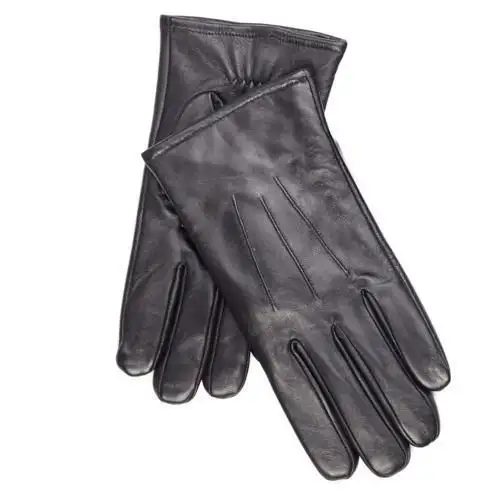
(Men’s Touchscreen Leather Glove, Isotoner)
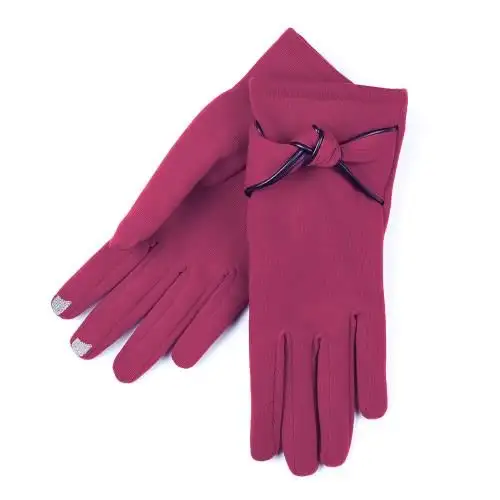
(Women’s touchscreen glove, Isotoner)
Similar gloves
If you like medieval style and steampunk, you can search for similar glove and accessories. They are usually handmade by artists and enthusiasts, and the price fluctuates greatly.
Girls have more punk style choices, and you can expand the keywords to Gypsy, Victorian, Gothic, etc.
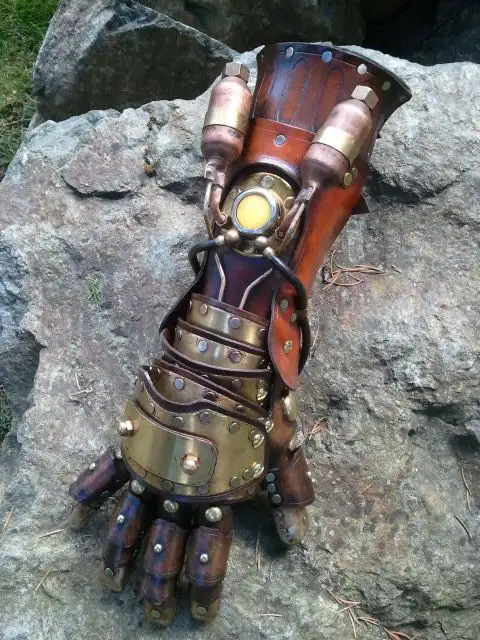
(This steampunk glove + arm guard that reminds me of the Three Musketeers costs about $1,400)
Gloves have a long history (but according to historical records, they are not as old as boots). In the beginning, like boots, they were used by men. Gloves were buried with the dead in royal cemeteries and bishops’ cemeteries in the West. The drawings of glove on manuscripts can be traced back to the 10th century.
According to Wikipedia, the record of gloves seems to be earlier. The Odyssey of Homer mentioned that Laertes wore gloves when walking in the garden to avoid thorns. However, in some other translations, there is no plot about glove, and Laertes used sleeves to cover his hands.
In the History of Herodotus, written in 440 BC, Herodotus described the plot in which the Spartan King Leotychides was accused of accepting a silver helmet gauntlet as a bribe. The ancient Roman senator and writer Pliny the Younger (c. 62-133) worked as a stenographer for his uncle Pliny the Elder (c. 24-79). In order not to dirty his uncle’s manuscripts, he worked with glove in winter.
Evolution of glove
When we study the history and evolution of gloves, we are actually studying the evolution of human behavior. From the perspective of symbolic interactionism, individuals respond to objects (gloves in this case) based on two meanings: the meaning of these objects/items for the individual and the meaning that they evolve in the individual’s social interaction. The motivation for social interaction can perhaps be explain as follows: people always adopt certain procedures and behaviors to ensure their own outcomes, meet their own needs, and pursue their own goals.
I plan to spend five or six pages introducing bits and pieces of glove history and anecdotes, and showcasing some of the treasures of glove held by the Glove Collection Trust, many of which were donate by individuals.
It starts from the 17th century and goes up to the 20th century.
Different types of Glove
In the 17th century, long glove were popular, and it was mainly men’s glove that emphasized both craftsmanship and aesthetics.
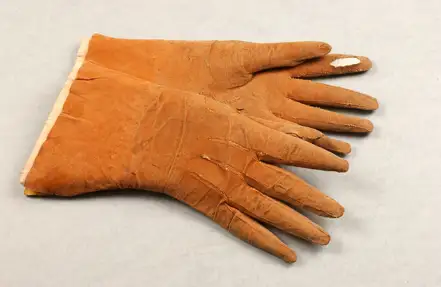
Early 17th century ladies’ gloves, with brown doe leather outer material and goatskin trim.
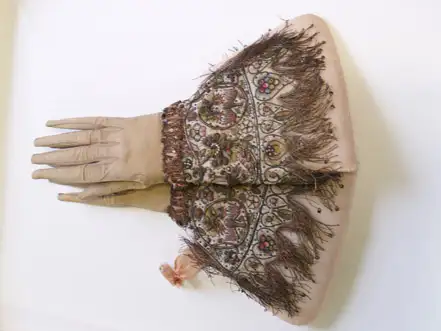
Beaded long gloves for women from about 1595-1605, with the fingers extended and the long part divided. They are decorate with a variety of silk threads and materials, which are very gorgeous.
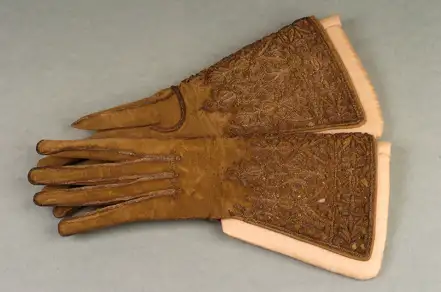
Men’s beaded long gloves made of brown doe leather, circa 1600, using an unusual angular wavy chain stitch.
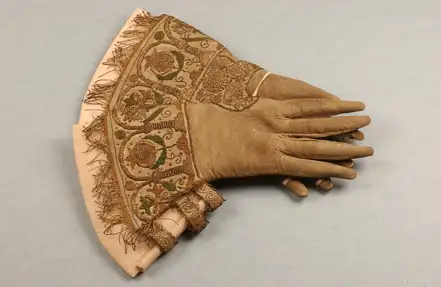
English gentleman’s long glove, circa 1600-1610. Made of cream doe leather, with honeysuckle and tulips embroidered mainly in pink and green silk, outlined in gold and silver.
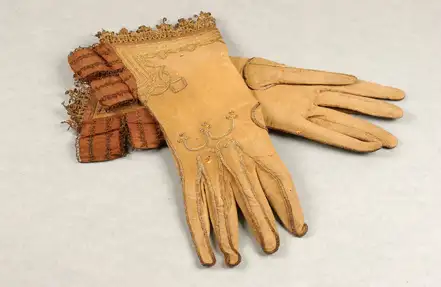
Men’s goatskin glove, circa 1620-1630, inscribed in ink on the lining: “glove of King Charles I, WB Redfern’s collection”. WB Redfern illustrated this glove in his Royal and Historic Gloves and Shoes, 1904.
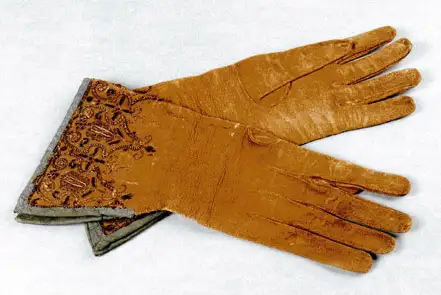
Men’s long leather glove, around 1625, probably wedding dress glove or riding glove.
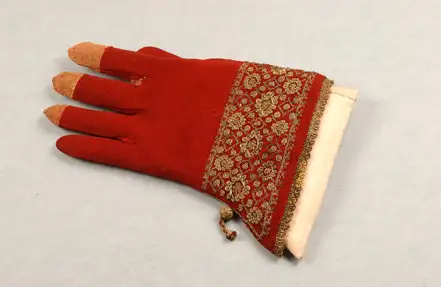
17th century beaded red silk glove. Unsure of origin, probably English.
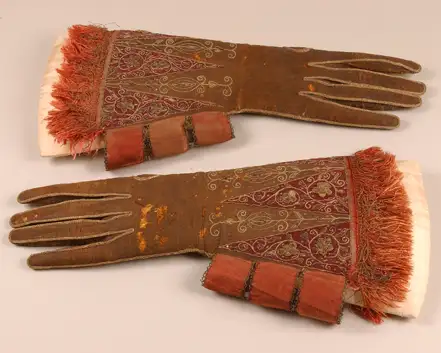
Men’s brown doe leather gauntlet glove, circa 1610-1635, 44 cm long. Glove of this size were not common and were a tribute to King James I of England (also King James VI of Scotland).
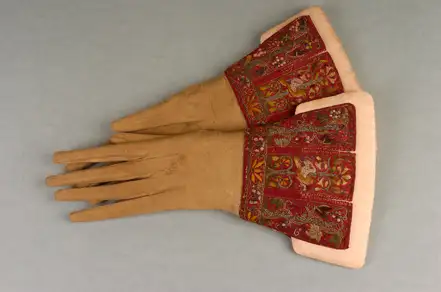
Leather gloves
Men’s long leather glove, circa 1610-1630. Described as “The Glove of the Lord Protector” in WB Redfern’s “Royal and Historic Glove and Shoes”, this pair of glove reflects Cromwell’s style – richly colored satins and beaded silks, which, in WB Redfern’s opinion, are consistent with the Protestant values advocate by Cromwell.
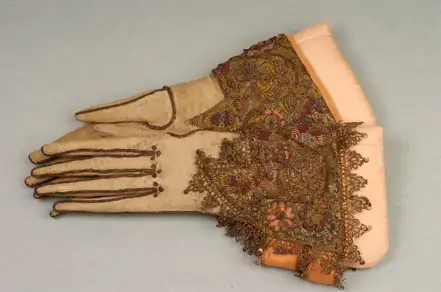
Luxurious beaded leather glove, circa 1600-1620, 34 cm long. The embroidery on these gloves is similar to that on the corset worn by Francis Walsingham in the collection of the Kyoto Academy.
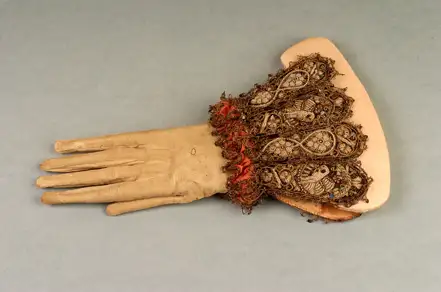
Cream-colored women’s leather glove with extended fingers and eight-layered glove decoration at the glove end, circa 1600-1620.
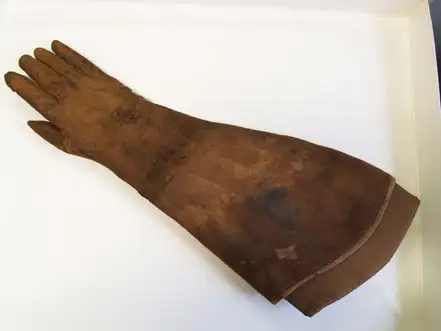
Large brown sheepskin glove from the 17th century, 57 cm long. Presumably they were made by the military or falconers, I think they would be great for fishing too xD
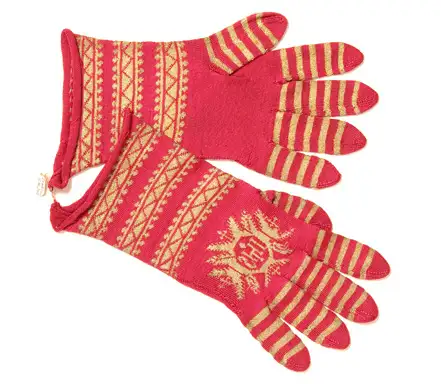
Ta-da~~ Do these glove look very modern? In fact, they are made of silk fabric from Italy in the 17th century and were worn by senior clergy on important occasions.



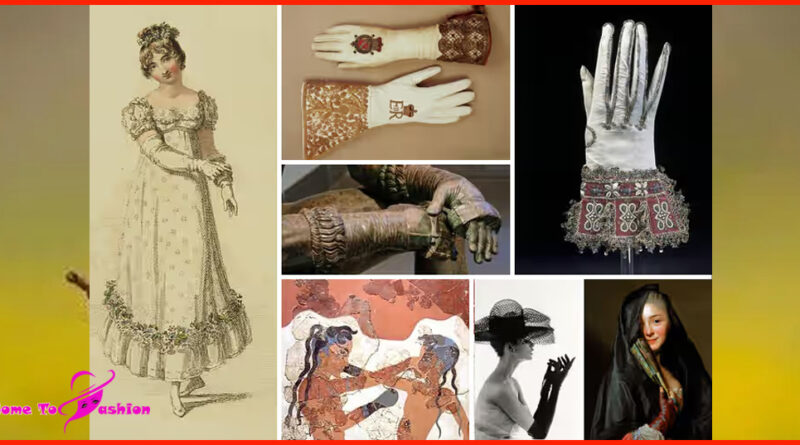
Pingback: Teach you how to properly clean your sports gloves
Pingback: 10 Ways to Style a Grey Skirt for Any Occasion -